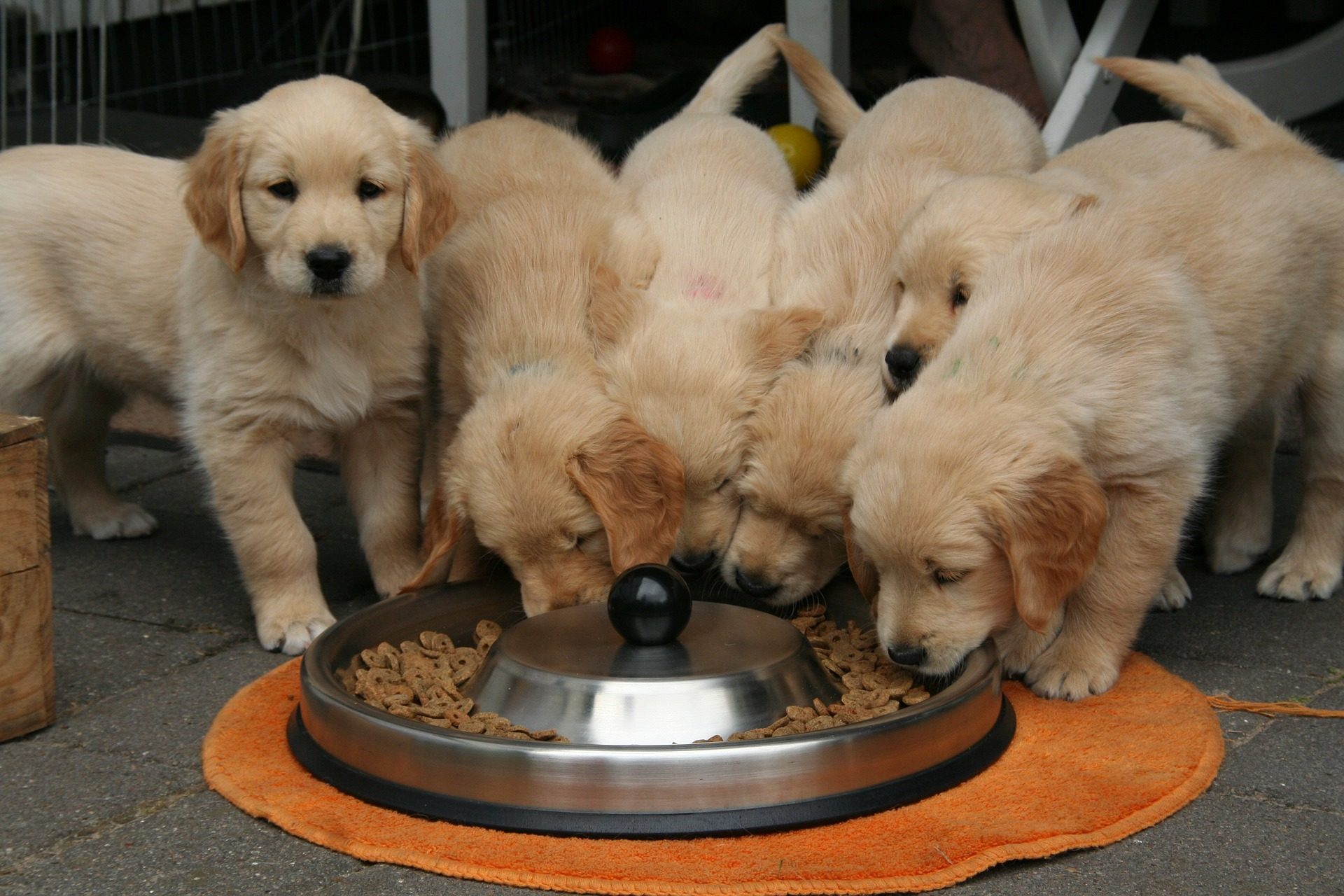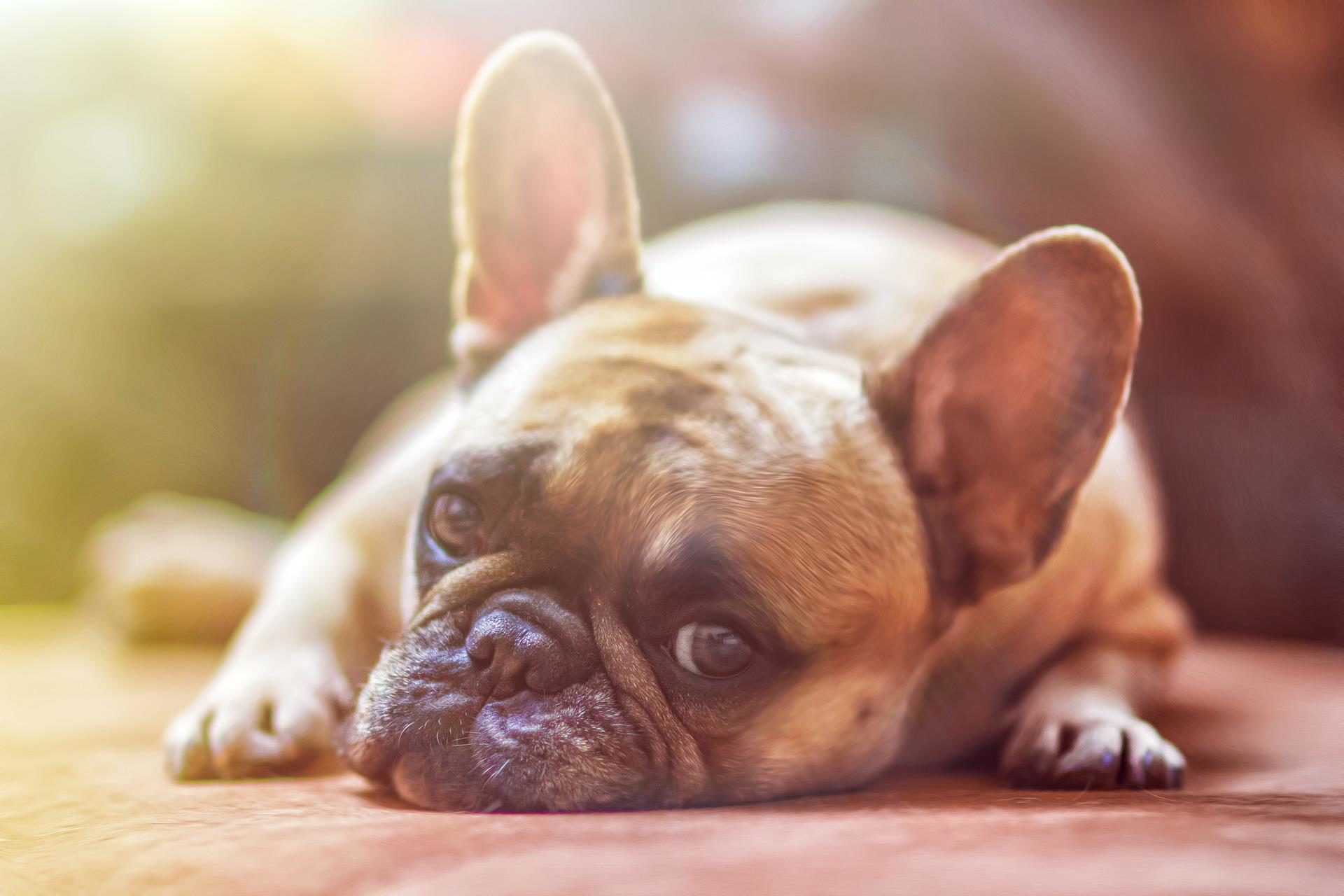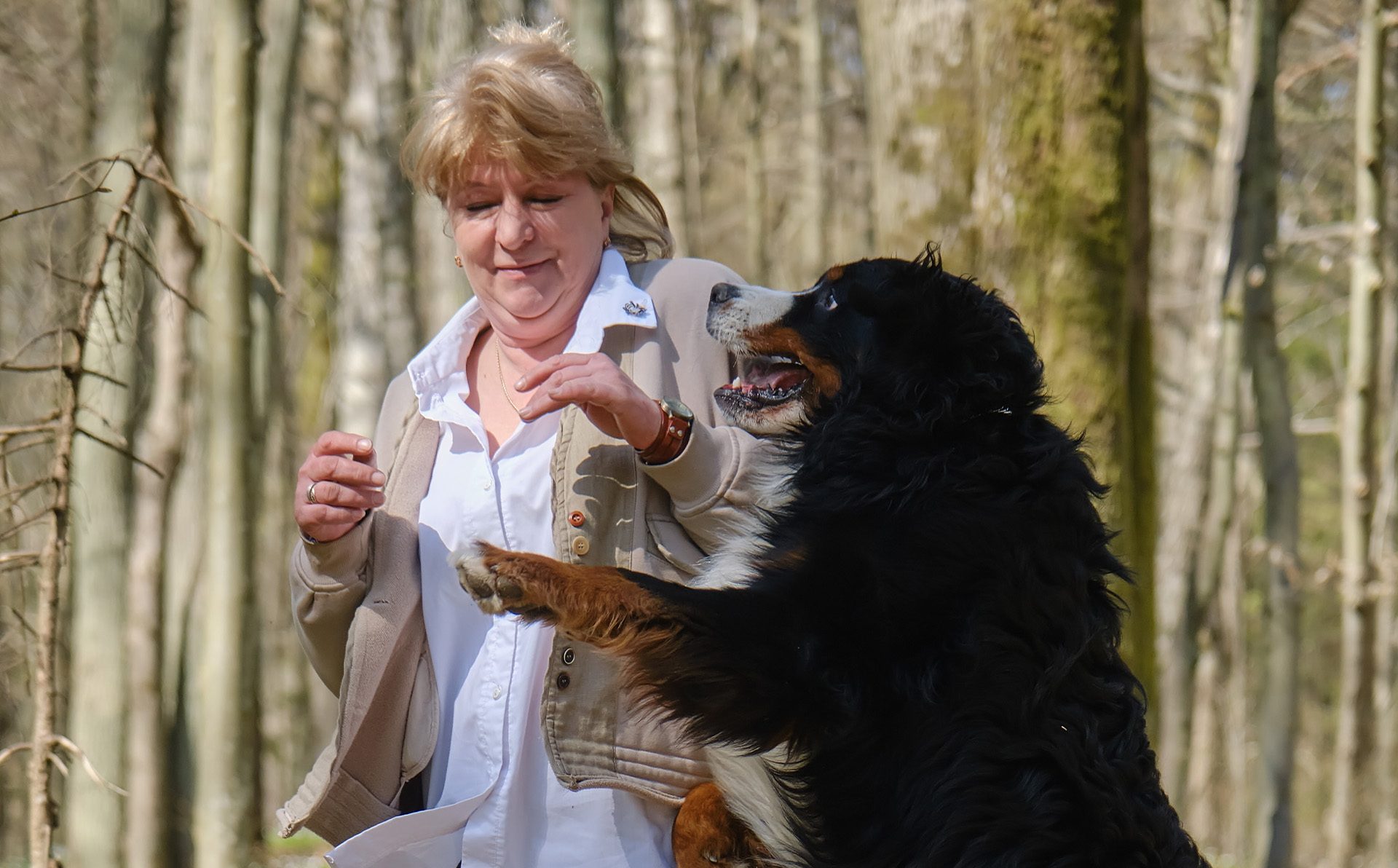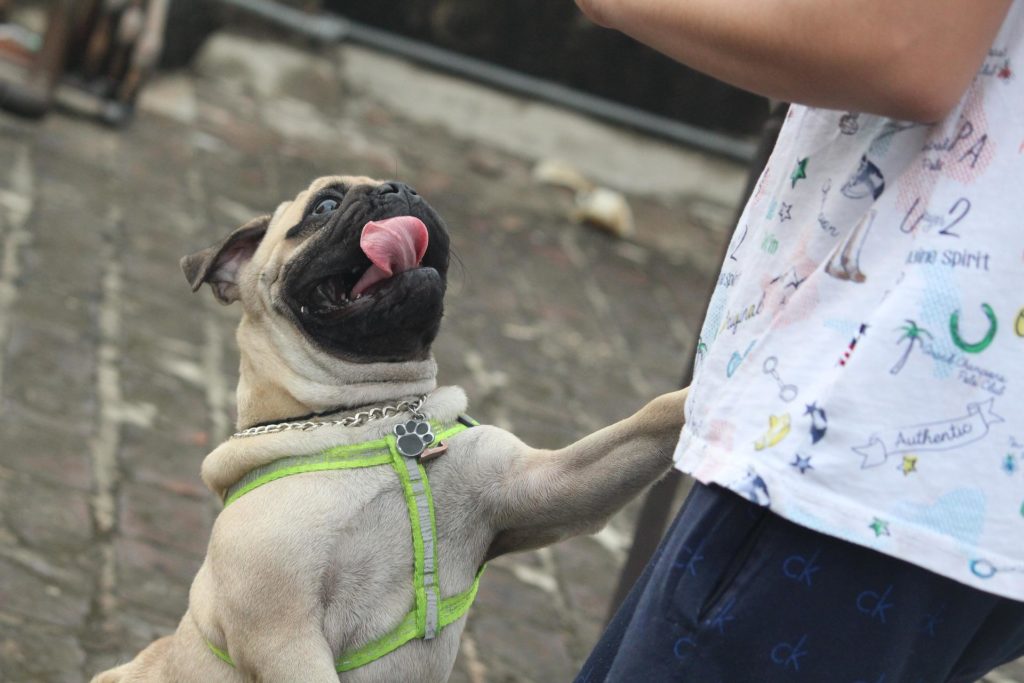Jump into Dock Diving!
 Wisconsin has 15,000 of them. Lakes. Every summer, they’re filled with people enjoying fishing, swimming, kayaking, skiing, and more. Pets are part of that picture, too. You’ll see them in the bow of a boat, sometimes on skis, splashing in the water, or jumping off a pier. In fact, dock diving for dogs is very popular and competitive events around the sport are growing by leaps and bounds.
Wisconsin has 15,000 of them. Lakes. Every summer, they’re filled with people enjoying fishing, swimming, kayaking, skiing, and more. Pets are part of that picture, too. You’ll see them in the bow of a boat, sometimes on skis, splashing in the water, or jumping off a pier. In fact, dock diving for dogs is very popular and competitive events around the sport are growing by leaps and bounds.
This blog post, with the help of Think Pawsitive Owner Katie Oilschlager, will highlight some dock diving fundamentals and, hopefully, encourage you and your dog to try our workshop and lessons, maybe even participate in our 2024 League events.
There’s some question about where the aquatic canine sport originated—the United Kingdom or the United States. No doubt about it, though, dock diving appeared in 1997 at the Purina Incredible Dog Challenge in St. Louis, Missouri.
Simply put, the activity consists of a dog jumping from a pier (or dock) into a body of water (lake or pool) to retrieve a toy. Competition requires a 40 ft. long dock and the measuring of the height or length of the dog’s jump.

To start, says Katie, you have to make sure your dog is “100% confident with swimming” and has been taught the “foundation pieces of swimming.” While some people frown upon using them, life jackets, according to Katie, “teach dogs how to keep their back flat and use all their muscle tone equally—shoulder muscles, quads, and hammies.”
Once the dog knows how to swim, Katie looks at whether or not the dog wants to jump in. And the body of water chosen is important. It needs to be clean and clear (and, obviously, deep enough) with no algae present. Dogs can get very, very sick, says Katie, from ingesting algae.
Before the fun really begins, it’s also important to remember several other things. First, dogs should be timed out from continuous dock diving after 15 or 20 minutes max. That includes dogs which have been conditioned. Halting the activity at the right time prevents water intoxication and cold tail (a type of muscle fatigue).
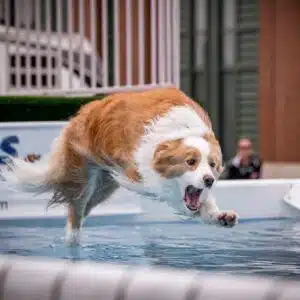
Second thing to keep in mind is that, especially on metal piers, there’s a risk of your dog slipping and injuring itself on the wet, slick surface. Katie recommends getting a rubber mat for such instances. Certainly allowing the pier time to dry out to give dogs the necessary traction would be ideal.
In order to dock dive, dogs need to have a real strong desire for toys. Keep in mind that retrieving the toy isn’t as important as chasing the toy, says Katie. Dock diving is the sport of jumping off the edge of a dock and then the chase.
A popular beginner technique for dock diving is the “place and send.” This involves holding the dog’s collar and then placing (throwing) the toy into the water. “While you won’t get a lot of distance when first teaching dock diving on a “place,” you will be building a ton of confidence,” says Katie. You can learn more about this technique by attending one of our workshops or private lessons.
The fun continues as the dogs practice running down regulation docks and the handlers work on their tosses. It’s poetry in motion as the handler triggers the toy out into the water and the dog leaps from the edge of the deck and pops up into it.

In competitive events, distance and/or height are measured. Distance measures the length of the dog’s jump from the dock’s edge to where the dog’s tail base hits the water. Height measures the reach of the dog’s paws at the highest point of the jump. Katie’s husband, Todd Oilschlager, runs a venue called Pier Pups here in the Midwest. Their record is a dog’s horizontal jump of 33 ft.
Different breeds of large and small dogs engage in dock diving. While Labs and Goldens tend to dominate the sport, Katie indicated more border collies seem to be joining in. For all of them, though, diving into a pool versus a lake is very different. Keep that in mind if your dog has become accustomed to one over the other.
A good time to see what your dog might think of dock diving is at the upcoming Fromm PetFest to be held on Saturday, September 23, at the Henry Maier Festival Park. Along with many other activities, dogs (even first-time jumpers) can try dock diving with the help of Pier Pups. There’s no pressure, because it’s in a non-competitive format.
Here at Think Pawsitive, the instructors in our workshop and lessons collaborate with handlers and dogs as they learn the technique and the rules of dock diving. We do have a prerequisite, and that is our 20-Minute Dock Diving Evaluation.
You’ll also find dock diving groups on Facebook.
We think dock diving is a paw-some aquatic activity, one that’s full of doggie delights. Please contact us with any questions you might have. If your dog loves to play fetch, jump, and swim, then you two belong in our beautiful indoor, heated pool with 40-foot dock.




 It’s not just keeping the dog company while you’re away. It certainly isn’t just playtime. It is also, and, more importantly, a wide variety of interactive learning opportunities, socialization, exercise, sports, and enrichment activities. In other words, it isn’t just doggy day care. It’s the day training program—TAILS Academy—at Think Pawsitive, LLC, in Waukesha, Wisconsin. Even better, dogs love it! There are some that whine and wag their tails when pulling into the facility’s parking lot. They know what’s ahead of them, a line-up that might go something like this…
It’s not just keeping the dog company while you’re away. It certainly isn’t just playtime. It is also, and, more importantly, a wide variety of interactive learning opportunities, socialization, exercise, sports, and enrichment activities. In other words, it isn’t just doggy day care. It’s the day training program—TAILS Academy—at Think Pawsitive, LLC, in Waukesha, Wisconsin. Even better, dogs love it! There are some that whine and wag their tails when pulling into the facility’s parking lot. They know what’s ahead of them, a line-up that might go something like this…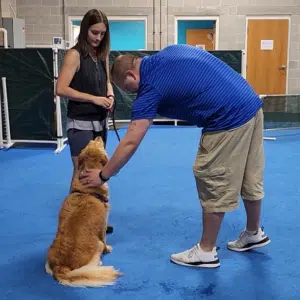
 Some sessions are classified as “enrichment.” Katie says these sessions, “Enrich the dog with an activity that provides either mental or physical stimulation. We’re building confidence.” She explains that the dog might go on different fitness equipment to help develop balance and coordination or build on sights and sounds with various treat puzzles. Enrichment sessions, “Help generalize the dog to environmental sights, sounds, and smells,” added Katie.
Some sessions are classified as “enrichment.” Katie says these sessions, “Enrich the dog with an activity that provides either mental or physical stimulation. We’re building confidence.” She explains that the dog might go on different fitness equipment to help develop balance and coordination or build on sights and sounds with various treat puzzles. Enrichment sessions, “Help generalize the dog to environmental sights, sounds, and smells,” added Katie.
